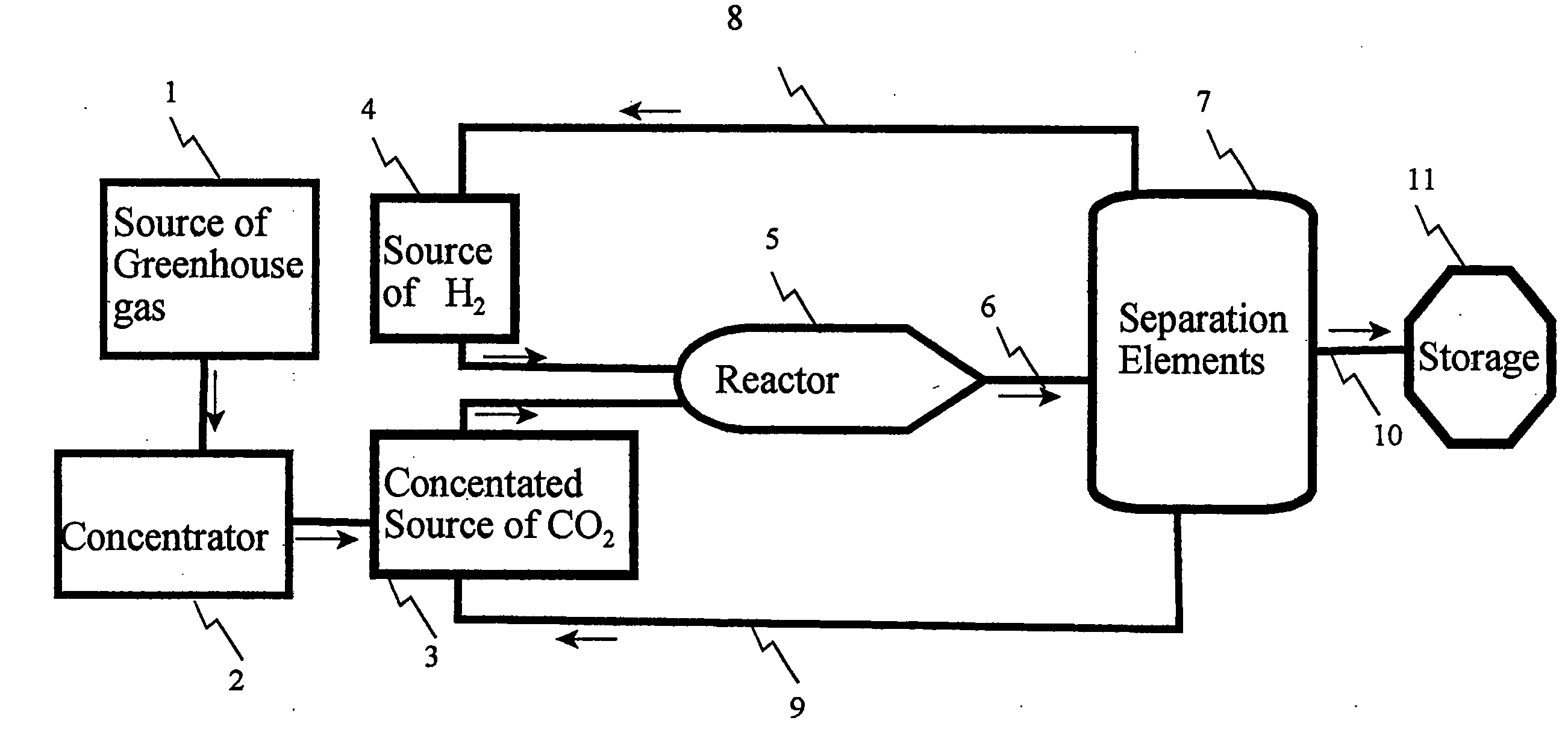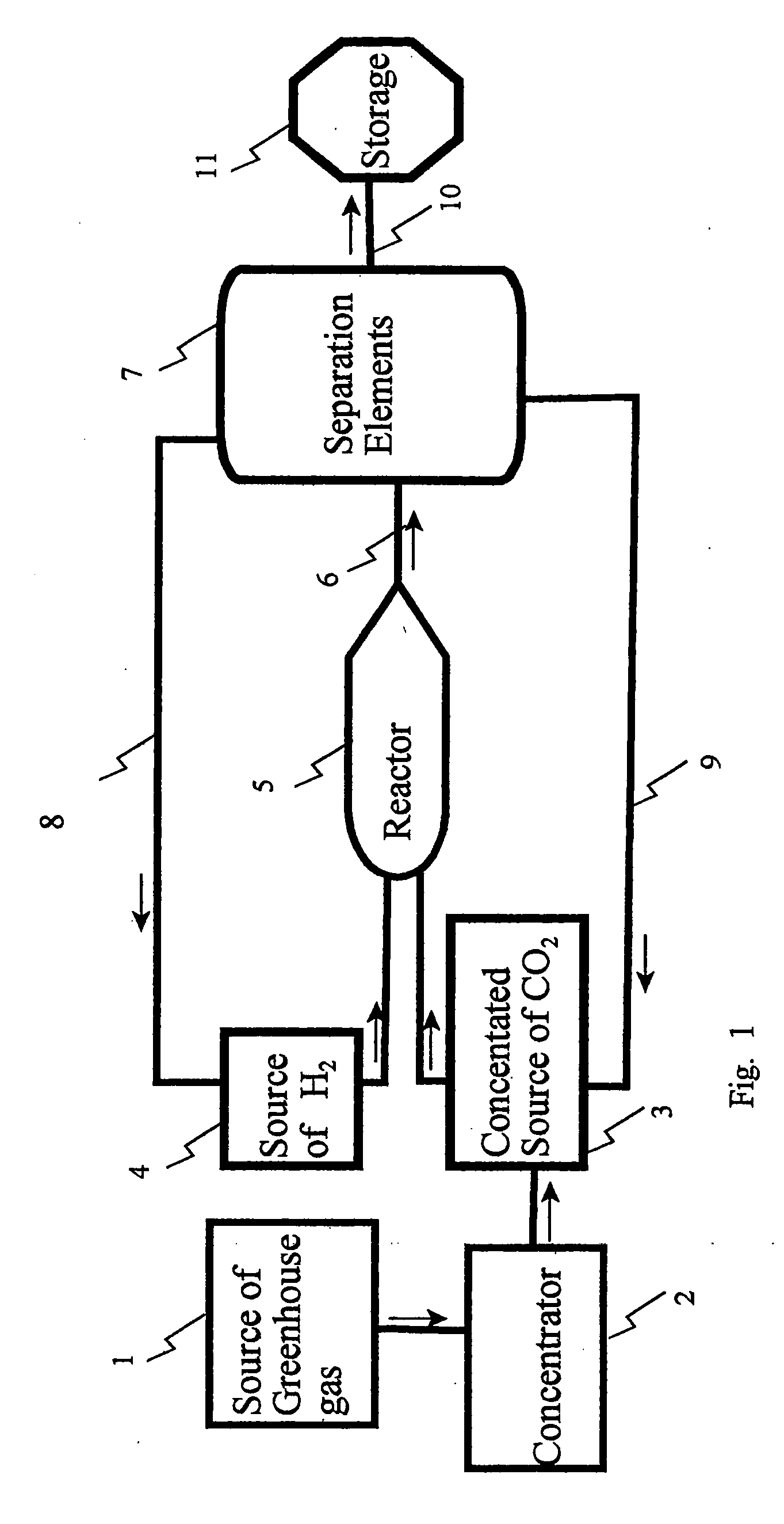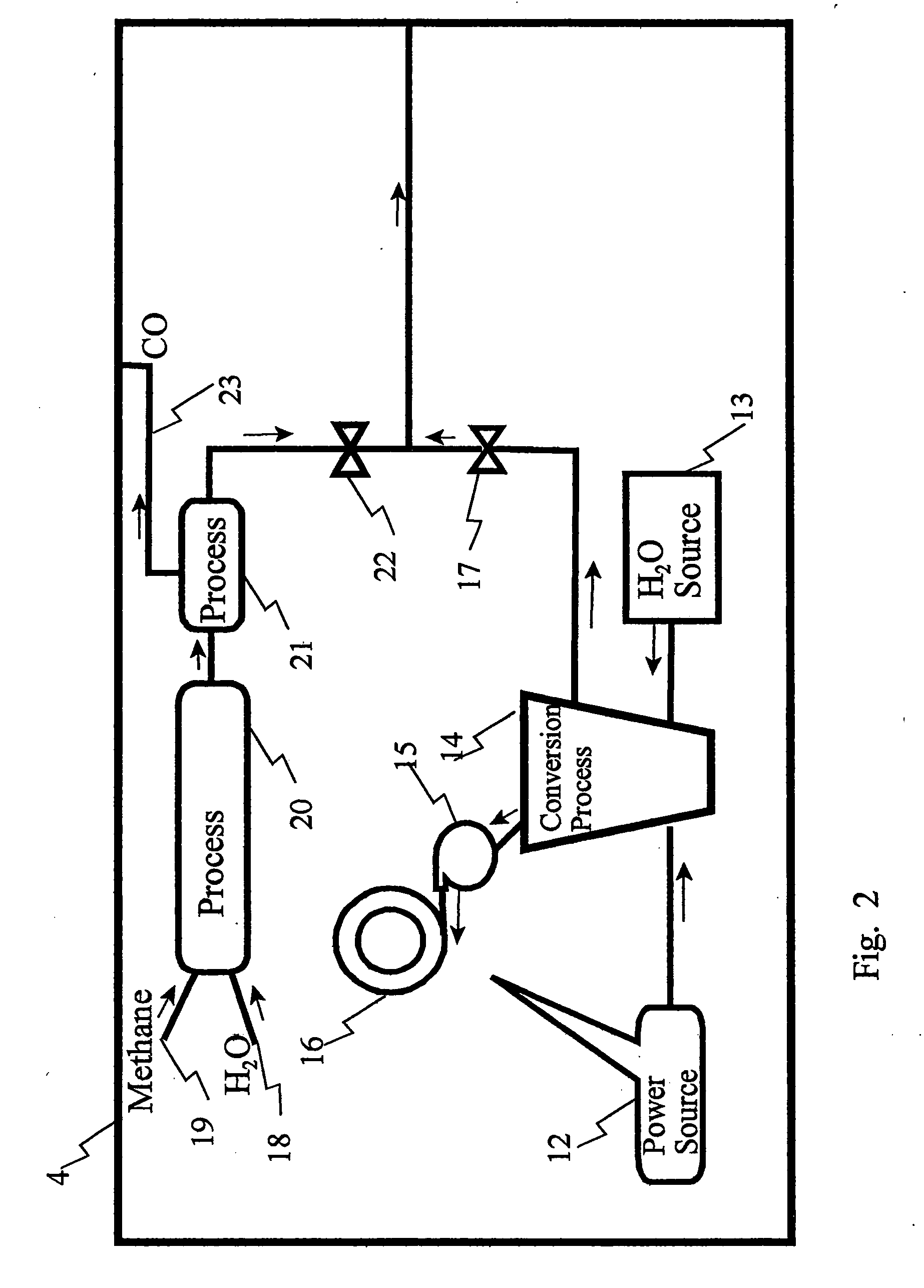Producing ethanol and saleable organic compounds using an environmental carbon dioxide reduction process
a carbon dioxide reduction and organic compound technology, applied in the direction of physical/chemical process catalysts, bulk chemical production, sustainable manufacturing/processing, etc., can solve the problems of energy produced pursuant to the maintenance of the world economy, inability to simply heat water molecules, and continuous process cos
- Summary
- Abstract
- Description
- Claims
- Application Information
AI Technical Summary
Problems solved by technology
Method used
Image
Examples
example 1
[0026]A water saturated stack gas / air is fed into an Amine absorber column. In the absorber, Diethanolamine (DEA) at a strength of 30% in water is used as the absorbent. The number of stages and the operating condition of the amine absorber are listed in the tables below. Sweet gas escapes from the top of the column. Rich amine leaves the absorber and moves through a turbo-expander for stepping down its high pressure and getting work out of it. Low pressure rich amine is flashed off in a flash vessel to release off a part of the absorbed CO2. Rich amine from the bottom of the flash vessel goes to the regenerator via a lean amine / rich amine heat exchanger where it is heated to about 90° C. The number of stages, heat load at the reboiler and the operating condition in the regenerator are changed depending upon the amount of amine flowing and its CO2 loading. Desorbed CO2 comes out of the condenser and is sent to the Ethanol synthesis plant. Bottom of the regenerator goes back to the a...
example 2
[0035]A water saturated stack gas / air is fed into the amine absorber column. In the absorber, Diethanolamine (DEA) at a strength of 30% in water is used as the absorbent. The number of stages and the operating condition of the amine absorber are listed in the tables below. Sweet gas escapes from the top of the column. Rich amine leaves the absorber and moves through a turbo-expander for stepping down its high pressure and getting work out of it. Low pressure rich amine is flashed off in a flash vessel to release off a part of the absorbed CO2. Rich amine from the bottom of the flash vessel goes to the regenerator via a lean amine / rich amine heat exchanger where it is heated to about 90° C. The number of stages, heat load at the reboiler and the operating condition in the regenerator are changed depending upon the amount of amine flowing and its CO2 loading. Desorbed CO2 comes out from the condenser and is sent to the ethanol synthesis plant. Bottom of the regenerator goes back to th...
example 3
[0047]A water saturated stack gas / air is fed into the amine absorber column. In the absorber, Diethanolamine (DEA) at a strength of 30% in water is used as the absorbent. The number of stages and the operating condition of the amine absorber are listed in the tables below. Sweet gas escapes from the top of the column. Rich amine leaves the absorber and moves through a turbo-expander for stepping down its high pressure and getting work out of it. Low pressure rich amine is flashed off in a flash vessel to release off a part of the absorbed CO2. Rich amine from the bottom of the flash vessel goes to the regenerator via a lean amine / rich amine heat exchanger where it is heated to about 90° C. The number of stages, heat load at the reboiler and the operating condition in the regenerator are changed depending upon the amount of amine flowing and its CO2 loading. Desorbed CO2 comes out from the condenser and is sent to the ethanol synthesis plant. Bottom of the regenerator goes back to th...
PUM
| Property | Measurement | Unit |
|---|---|---|
| Fraction | aaaaa | aaaaa |
| Temperature | aaaaa | aaaaa |
| Temperature | aaaaa | aaaaa |
Abstract
Description
Claims
Application Information
 Login to View More
Login to View More - R&D
- Intellectual Property
- Life Sciences
- Materials
- Tech Scout
- Unparalleled Data Quality
- Higher Quality Content
- 60% Fewer Hallucinations
Browse by: Latest US Patents, China's latest patents, Technical Efficacy Thesaurus, Application Domain, Technology Topic, Popular Technical Reports.
© 2025 PatSnap. All rights reserved.Legal|Privacy policy|Modern Slavery Act Transparency Statement|Sitemap|About US| Contact US: help@patsnap.com



